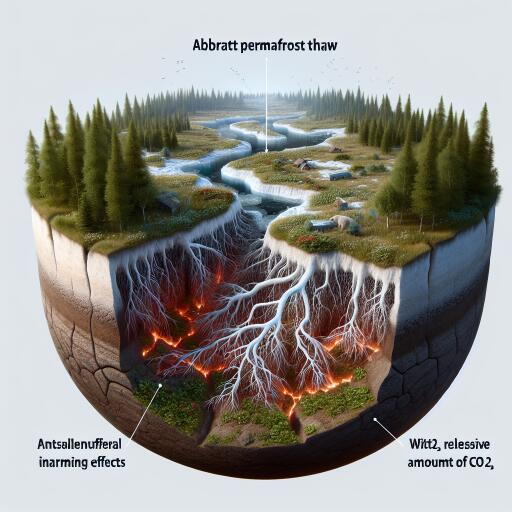
Abrupt Permafrost Thaw Intensifies Warming Effects on Soil CO2 Emission
In recent scientific discoveries, permafrost regions, which form a significant aspect of our planet’s cold environments, are becoming crucial focal points in studying climate change’s impacts. Groundbreaking research highlights a nuanced phenomenon within these icy realms: areas experiencing abrupt permafrost thawing exhibit a higher sensitivity to climate warming, significantly influencing soil carbon dioxide emissions.
The intricacies of permafrost thaw, notably through a process termed thermokarst, emerge as central to understanding the dynamic carbon flux within permafrost ecosystems. Thermokarst describes the sudden collapse of ground upon thawing, affecting approximately 20% of the northern permafrost zones. Alarmingly, this subset harbors about half of the planet’s below-ground organic carbon, marking these areas as potential hotspots for elevated carbon release under the duress of warming temperatures.
Diving into the core of this issue, a recent comprehensive research endeavor has shed light on the interactions between permafrost thaw and soil carbon dioxide (CO2) fluxes. Through a combination of field warming experiments and meticulous laboratory soil incubation, spanning diverse thermokarst landscapes, the study delineates a stark contrast in carbon dynamics between areas undergoing rapid thermokarst formation and those remaining relatively stable.
The results of this investigation are telling; soil CO2 emissions in thermokarst areas were found to surge at a rate approximately 5.5 times that observed in non-thermokarst regions under similar warming scenarios. This considerable difference points to the unique vulnerability of thermokarst terrains to warming inducements. The analysis extends further to identify contributing factors, including diminished soil substrate quality and a proliferation of microbial genes conducive to organic carbon decomposition within these rapidly thawing soils.
Further reinforcing these findings, soil samples from an extensive range of thermokarst-affected locales revealed an intrinsic high temperature sensitivity of CO2 emissions, indicating a more pronounced response to climate warming across these fragile ecosystems.
Encapsulating the broader implications of this phenomenon, the study estimates a potential uptick in soil carbon release from upland thermokarst regions across the Northern Hemisphere. This increment, forecasted at approximately 0.4 Petagrams of carbon annually, could account for a significant fraction of predicted permafrost carbon losses by the century’s end. Such projections offer a sobering reflection on the escalating feedback loop between permafrost carbon release and global warming.
This comprehensive body of work not only accentuates the acute sensitivity of thermokarst regions to climate change but also underscores the imperative for nuanced considerations in modeling future permafrost carbon feedback mechanisms. By integrating these insights, there is hope for enhancing the predictive accuracy of our projections concerning the permafrost carbon-climate interface, thereby informing more targeted and effective mitigation strategies against the accelerating pace of climate change.
As the planet continues to grapple with the multifaceted consequences of a warming world, the profound effects of abrupt permafrost thaw on soil carbon emissions epitomize the complex interplay between terrestrial landscapes and the atmospheric system. This research reinforces the critical need for sustained scientific inquiry into permafrost dynamics, guiding policy and conservation efforts towards safeguarding these vital cold-climate ecosystems from irreversible degradation.





Leave a Reply